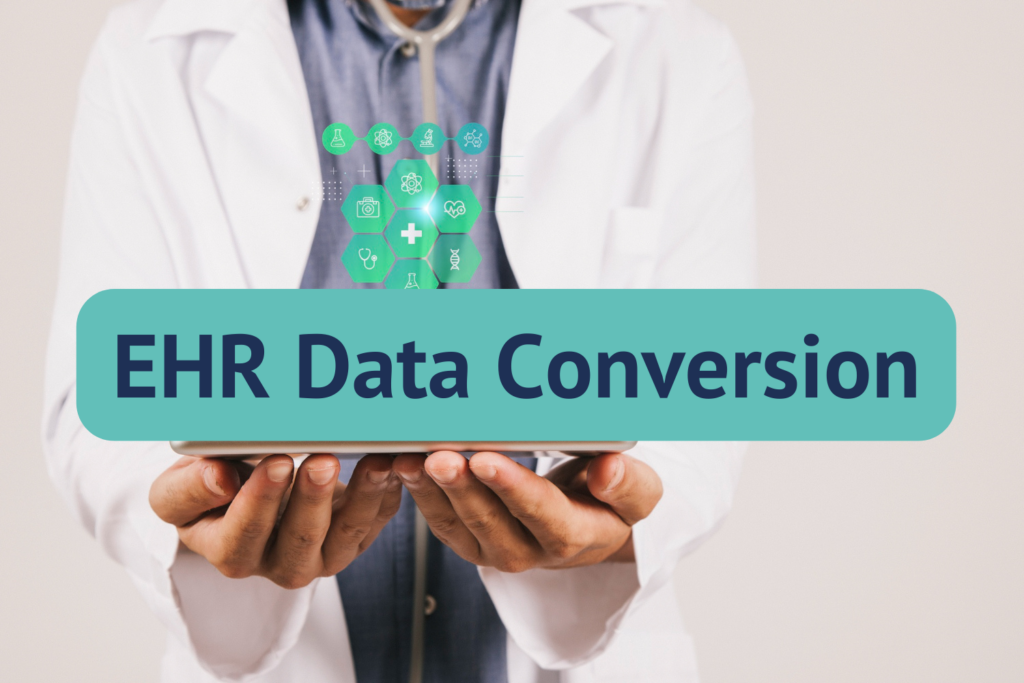The adoption of electronic health records (EHR) by healthcare organizations is becoming more and more necessary as the field of healthcare IT develops. Organizations must incorporate the process of data conversion in their implementation plan to guarantee a smooth transition to a new EHR. EHR data conversion, also known as data migration, is the process of transferring data from an outdated health record system to a new one. Between paper-based health records and an EHR, as well as between an old EHR and a new EHR, this EHR data conversion process may take place.

Why do you want to convert your old patient records?
Retention of records – Depending on your state and kind of provider, you might be required to keep your patients’ records for up to 10 years.
Care for ongoing patients: If you anticipate seeing a patient again, you’ll need access to their historical information to check on their allergies, previous illnesses, etc.
Smoother transition to your new EHR: You will be able to see patients in your new EHR more quickly and easily if you can import or have access to prior patient data.
What is the difficulty in EHR data conversion?
The majority of the data in EHR records are not standardized, in contrast to billing, where the majority of data is well standardized because of HIPAA standard claim formats. ICD-10 and CPT codes are standard, but beyond that, most EHR data is highly varied.
There is no set standard for how to record things like history, chief complaints, HPI, exams, plans, etc. Additionally, the majority of EHRs permit doctors to dictate all or a portion of their notes, therefore, it is not possible to export all patient records as data and import them as data into another system.
What are the options for EHR data conversion?
The choices begin with the method of data access. If you’re a surgeon who only sometimes sees the same patient again, your previous vendor might be able to archive your data for you on CDs in a readable format so that you can safely store them away without ever attempting to import them into your new EHR. Finding out what the export options are from your previous EHR is a wonderful place to start if you want the data in your new EHR. The only way to know what is achievable in this situation is to call your vendor, where they will frequently hear “my client is thinking of leaving.” Your new supplier is limited by the supplies they have.
What about the Cost of EHR data conversion?
It’s likely that your current vendor will charge you to export data for you. You should also look into the possibility of yourself exporting the data from the EHR at no additional cost. Some suppliers will offer archiving and/or view-only for a discounted fee if you don’t actually need all of the old data in your new EHR.
It’s also likely that the new EHR vendor will charge for the data import. According to the technology, these services normally cost at least $1,000 per provider, and there can be ongoing expenses. There are usually a few choices to take into account if you are transferring billing information as described above.
Since this is going to cost me, should I proceed?
Only you can answer that question. You may want to take the following steps to minimize the cost:
Include a few new vendors that offer free or inexpensive imports in your quest for EHRs.
Different solutions for importing billing-related data will be available in some EHRs with PM/Billing systems. Take into account the expense (is it worthwhile?) and the accuracy (trash out = junk in). After you install the new system, it can be less expensive and more accurate to just ask people for information when they visit you the following time.
For a few months, keep using your old EHR while gradually exporting patient notes and importing them into your new EHR. Printing old notes to PDF and importing them gradually into your new EHR should be possible, even if your previous EHR lacks a defined export method.
